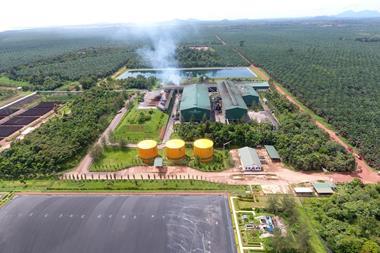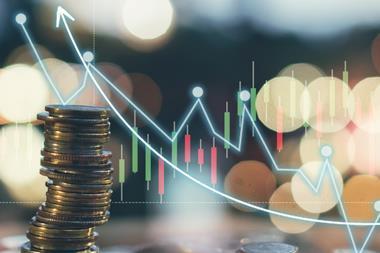
With oil breaching $100/barrel and geo-political tension rapidly escalating, the prospect of a pullback in raw material inflation and supply chain risks is rapidly receding. Unilever set the tone during results season, saying that without offsetting pricing and savings, gross margins would be hit by a whopping 7% in 2022. In monetary terms, the company is expecting a €3.6bn cost hit. That’s treble the impact in 2021 and will take at least two years to fully offset.
The company flagged that crude oil had risen in the last year by 60%, palm oil by 130% and soybean oil by 100%. On the logistics side, Shanghai freight costs are up five-fold as well as US transport costs, which have doubled. What we are seeing is the full impact of inflation on company P&Ls now that hedging protection is rolling off. The other challenge is that a lot of raw materials and almost all logistics/distribution simply can’t be hedged. Visibility is very low right now.
Similarly, Danone guided 2022 cost inflation of low to mid-teens compared to 8% in 2021, with dairy and packaging costs the main issues. Nestlé didn’t provide a 2022 cost estimate but said every part of its business is feeling the pinch of inflation, with the company specifically calling out particular pressure points in coffee and aluminium.
Attention is now moving quickly to the big pricing increases needed to offset inflation and the impact on volume elasticities. So far, the volume impact from higher pricing has been benign – especially in the US – but companies are signalling this could change as pricing continues to ratchet up. We are starting to see some volume weakness from higher pricing in Latin America but the acid test will be Europe.
For most of Continental Europe, there is only one window a year to take pricing. Europe has been deflationary for a decade so getting pricing through will be a challenge. From the manufacturers’ perspective they will be looking to offset not only inflation in 2021, but also what they expect to come down the pipe in 2022.
In our view, this could mean food prices rising by 5% to 10%. And in some categories like coffee, where arabica coffee bean prices have doubled in a year, pricing could be even higher. So far we haven’t seen much consumer downtrading or switching to private label, but we do see this as a risk given disposable incomes are seeing a real hit from energy and higher food prices. It will become apparent over the next six months which companies have real pricing power and which don’t. Inflation has now surpassed the last two spikes in 2008 and in 2011, and so in that sense we are now in uncharted territory.
The other metric investors are watching closely is what is happening to advertising spend as inflation spikes. In previous commodity spikes, advertising was often seen as a balancing item to try and hold profit margins. Our long-standing view is this is a short-term fix that can potentially damage brand equity and the long-term health of brands.
In general, management teams in the sector have learnt from past mistakes and as a result we are seeing more margin resets rather than pulling back on media costs. With more advertising spend going into digital and much better data analytics, it is certainly true that the fmcg sector is getting more efficient on how and where to spend money – but for some, old habits die hard.



















No comments yet